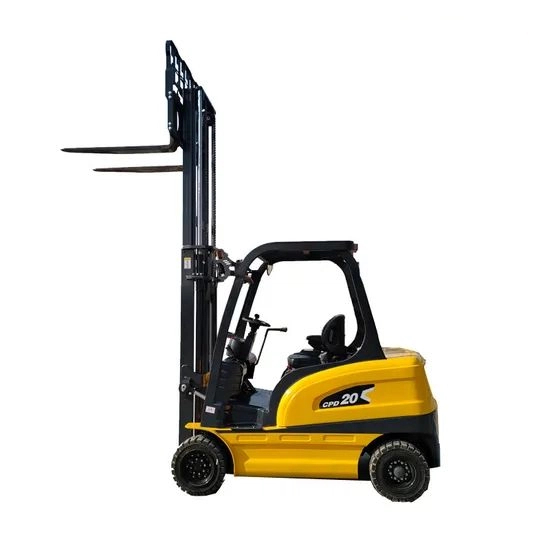The core working principle of an electric forklift is to convert electrical energy into mechanical energy, using an electric motor to drive movement and a hydraulic system to perform lifting and tilting operations.

1. Core Energy Source: Battery
The battery serves as the power foundation of the electric forklift, functioning like a "fuel tank" with two main roles:- Electrical energy storage: It stores electrical energy by being charged via an external charger, providing power for the entire forklift.
- Power supply to core components: It directly supplies power to key components such as the drive motor, hydraulic motor, and control system.
2. Power Transmission and Movement: Drive System
The drive system is responsible for the forklift’s movement and acts as the key link in converting electrical energy into mechanical energy for travel:- Electrical energy transmission: The battery delivers direct current (DC) to the drive motor.
- Motor operation: Upon receiving electrical energy, the drive motor starts and converts the electrical energy into rotational mechanical energy.
- Power output: The rotational power of the motor is transmitted to the drive wheels through components like a reducer and drive shaft, ultimately propelling the forklift forward or backward.
3. Cargo Handling: Hydraulic System
The hydraulic system is responsible for lifting and tilting the forks to pick up and place cargo, with its core being "hydraulic transmission":- Power activation: The battery supplies power to the hydraulic motor, which then drives the hydraulic pump to operate.
- Hydraulic energy conversion: The hydraulic pump converts mechanical energy into hydraulic energy, compressing hydraulic oil to generate high pressure.
- Action execution: High-pressure hydraulic oil is delivered to different hydraulic cylinders through oil pipes:
- Lifting hydraulic cylinder: Pushes the forks up or down to achieve vertical movement of the cargo.
- Tilting hydraulic cylinder: Controls the fork carriage to tilt forward or backward, preventing cargo from slipping and facilitating cargo handling.
4. Operation Control: Control System
The control system acts as the "brain" of the forklift, ensuring all operations are precise and safe:- Core controller: Receives input signals from the control lever, steering wheel, brake, etc., calculates the required actions, and sends instructions to the motors and hydraulic valves.
- Operating components: The operator controls the direction via the steering wheel, adjusts lifting, tilting, and travel speed via the control lever, and stops the forklift via the brake.
- Safety protection: Built-in functions such as overload protection and low-battery alarm prevent damage to the motor or hydraulic system and ensure operational safety.
- Clear energy conversion: The entire process revolves around the conversion of "electrical energy → mechanical energy/hydraulic energy", with no exhaust emissions, making it more environmentally friendly.
- Relatively simple structure: Compared with internal combustion forklifts, it eliminates complex components such as engines and gearboxes, resulting in easier maintenance.
- Smoother operation: The electric motor drive and hydraulic control enable higher precision in movements, leading to smoother travel, lifting, and lowering processes.

